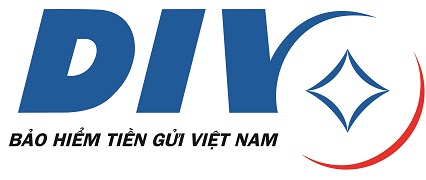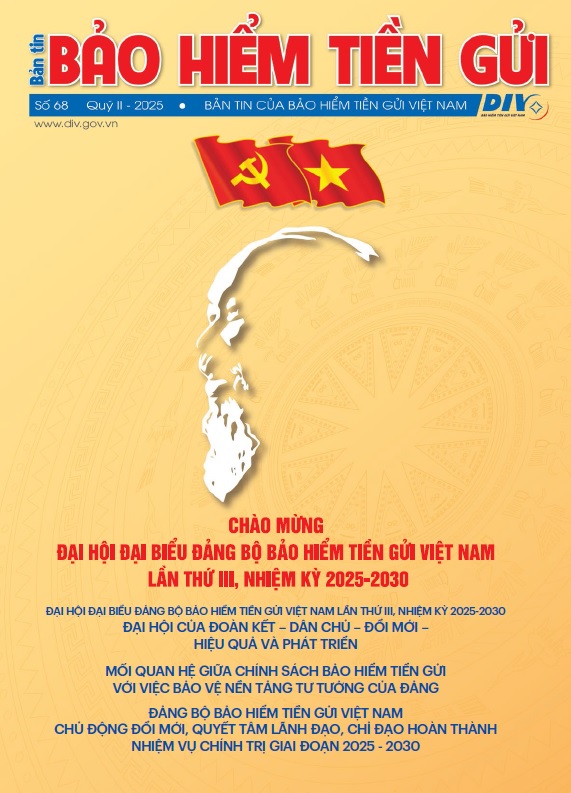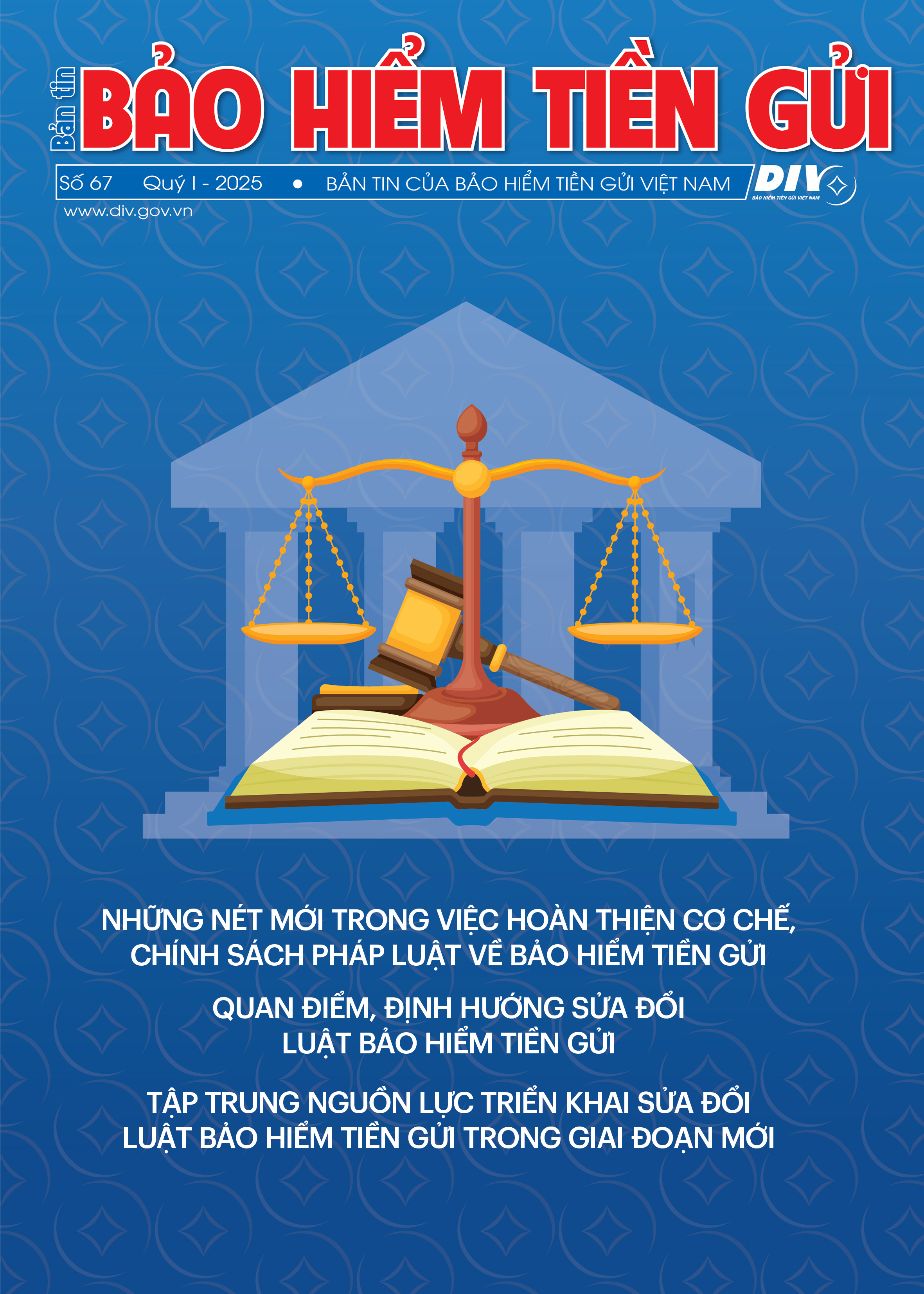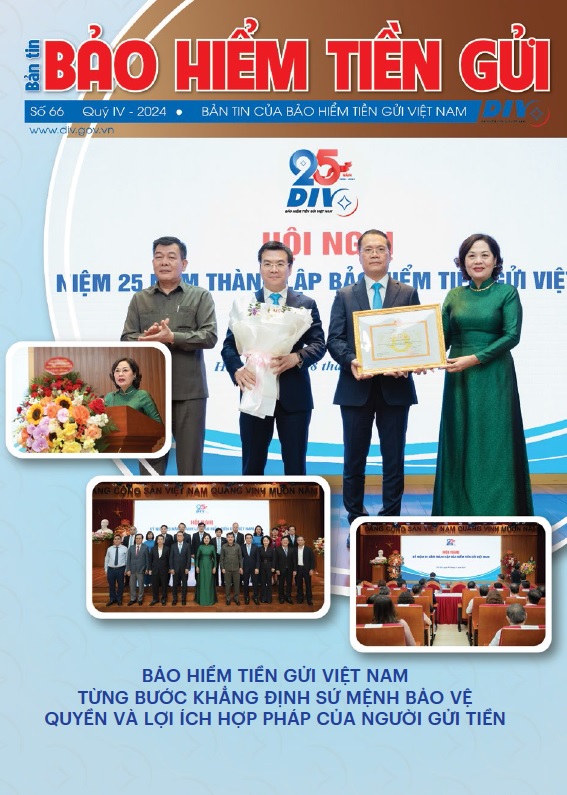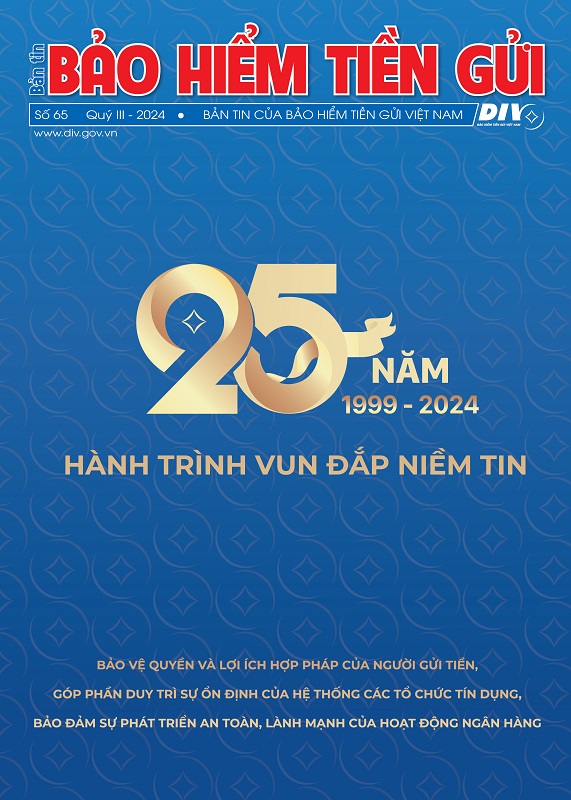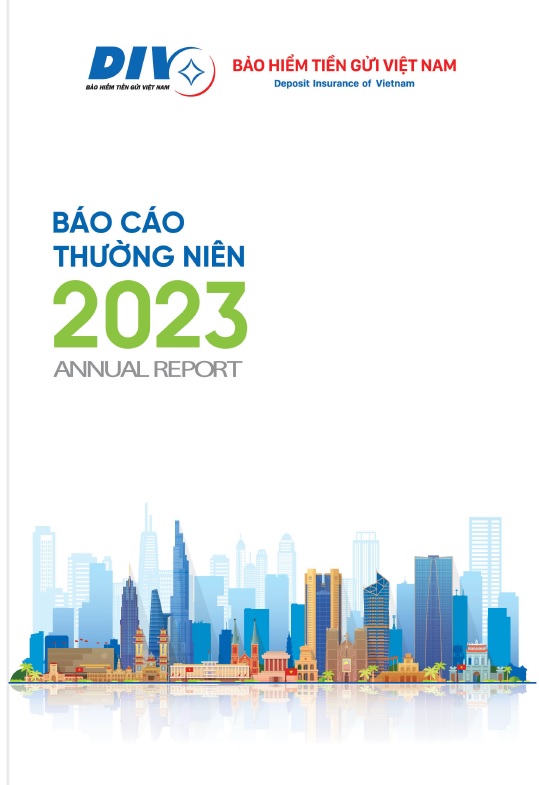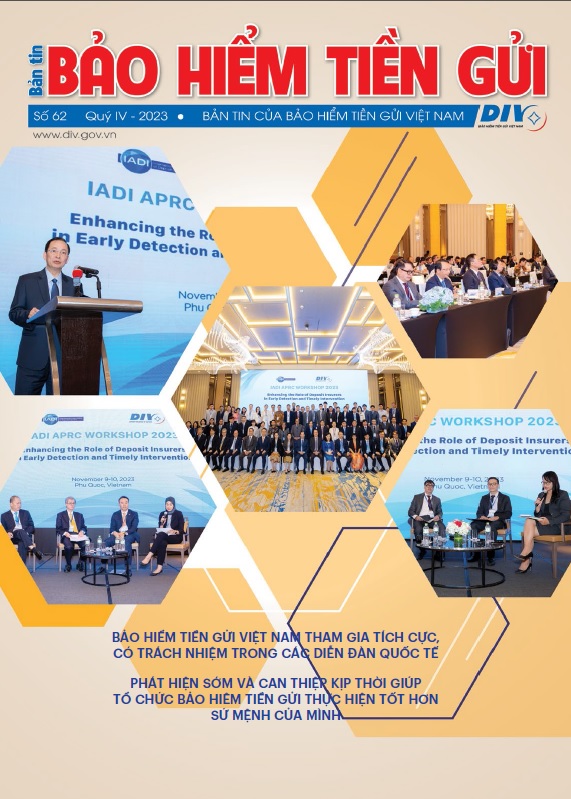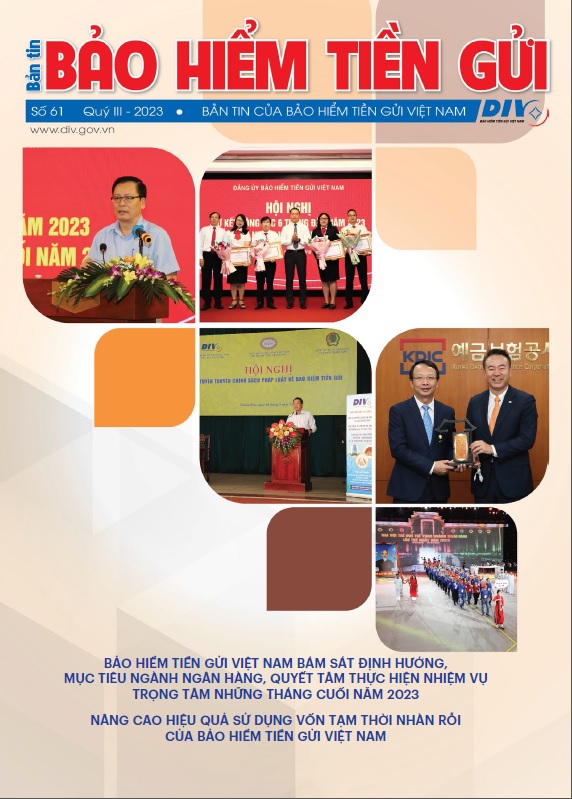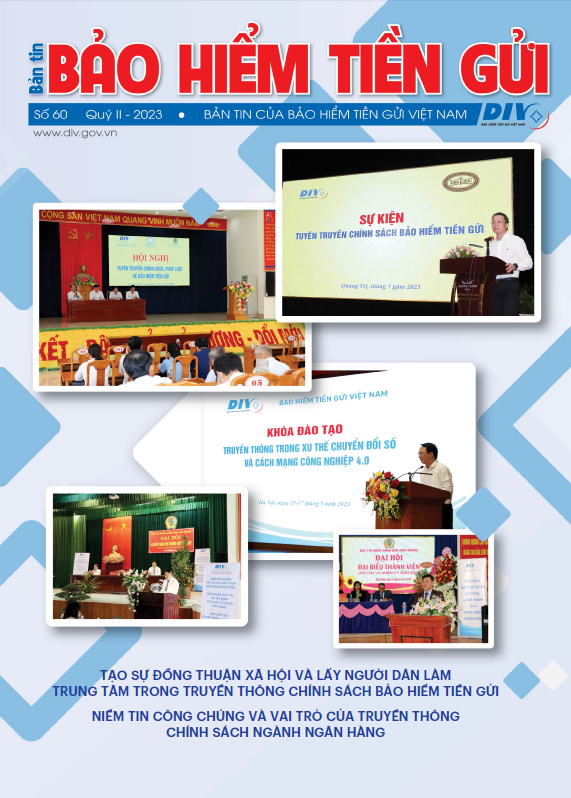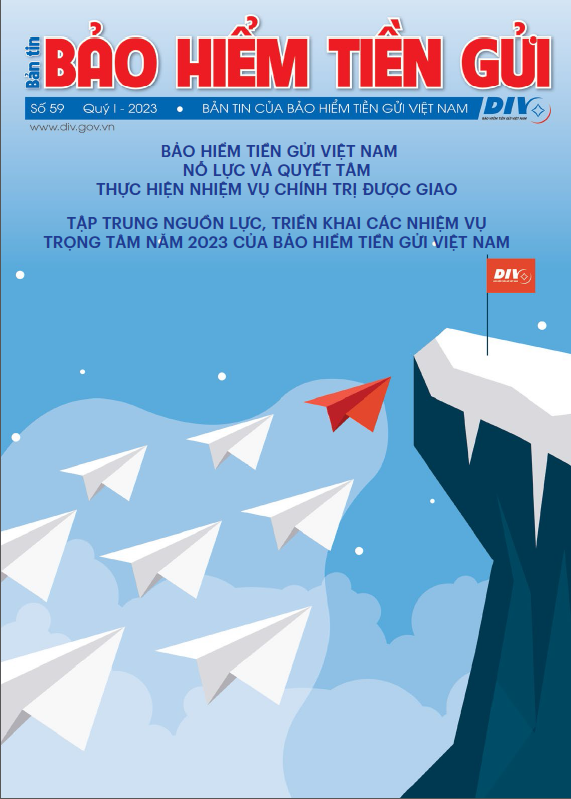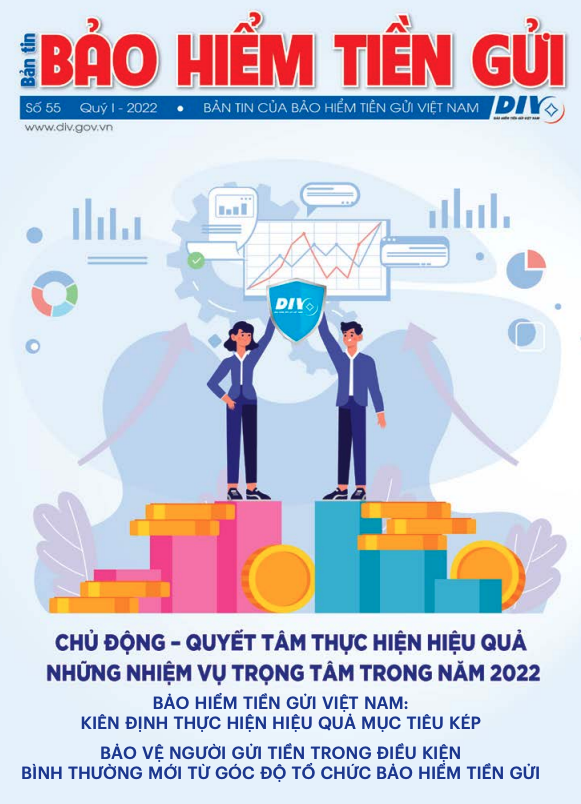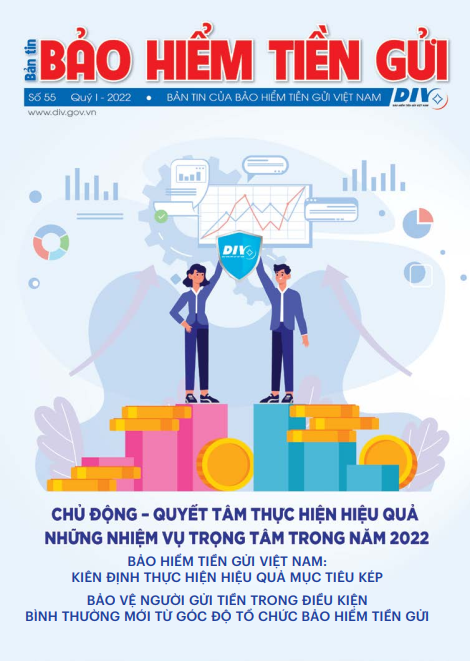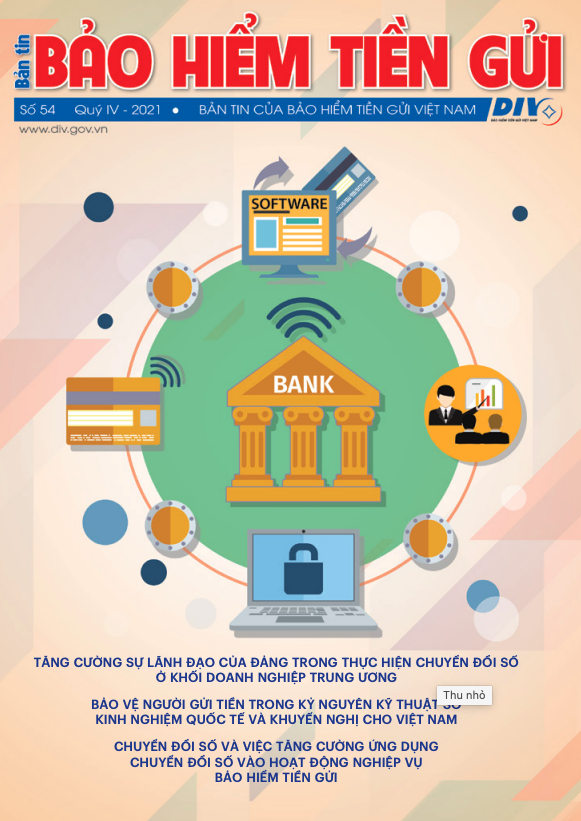The enactment of the Law on Deposit Insurance has created a firm and unified legal basis for improving the effectiveness of the deposit insurance. According to the Law, the Deposit Insurance of Vietnam (DIV)'s supervision over deposit insurance (DI) members has been implemented in a more focused and effective manner since 2013.
DIV has supervised DI members’ compliance with DI and banking prudential regulations on the basis of information inputted by the DI members and from other sources. Over the past years, DIV has actively conducted researches and applied several models of financial supervision which are conformable to the actual situations of Vietnam. Supervision has been carried out uniformly by DIV’s headquarters and regional branches without overlapping to meet the managerial requirements. DIV- made supervision reports have been a qualified source of information for financial regulators. As of the end of 2013, DIV has been regularly supervised 100 per cent of DI members including 92 commercial banks and cooperative banks, 1,145 people’s credit funds with total announced deposits of more than 2 million billion dong. Through off-site supervision, many violations of DI regulations and banking prudential rules have been detected and then timely risk alerts have been sent to the members, especially small-sized institutions such as local people’s credit funds. DIV’s supervision has been constantly upgraded towards international standards and served as a basis for its other operations.
Vietnam's international integration has paved the way for the financial banking system to develop vigorously. DI members have been thriving in both size and type and their various activities have induced more risks. Therefore, DIV and its supervision need to improve for better performance. The Law on Deposit Insurance was promulgated forming a comprehensive and unified legal framework for DIV to improve its operations, particularly to perform supervision promptly, effectively and with good quality.
According to the Law on DI, basically, the goal and methodology of supervision are maintained as supervising DI members' compliance with DI regulations and banking prudential rules in order to protect legal rights and interests of depositors, contribute to the stability of credit institutions system and ensure the safety and soundness of banking activities. However, the Law presents some new points regarding supervision as compared to the previous legal documents as follows:
(i) Object of supervision: DI members are credit institutions, foreign bank receiving branches deposits in Vietnam dongs from individuals. Deposits of organizations are not public. Therefore, the beneficiaries of DI scheme are now limited to individual depositors who are considered to have the limited ability to access market information and analyze it. Besides, surveys conducted by the DIV on deposits at DI members show that the insured individual depositors account for over 90 per cent of the total depositors of DI members. This is also a current trend in the world. However, the narrowing of DI beneficiaries also contracts the objects of the supervision. Besides, according to the Law on Credit Institutions (2010), non-banks credit institutions, (financial companies and financial leasing company) are not allowed to take individual deposits. As a result, non-bank institutions are not an object of DI scheme and thus, of DIV’s supervision. Instead, micro-finance institutions are a new object according to Decree No.68 detailing and guiding the implementation of DI Law.
(ii) Information sharing and reporting: as stipulated by previous by-laws, information for the DIV's supervision came from 2 main sources. Direct data from DI members includes financial statements, statistical data and other reports as required by the DIV. The second source is from the State Bank of Vietnam (SBV). However, the fact is that DIV has received information mostly from DI members which proved to be limited, especially for the people’s credit funds system. The information from the funds has been derived from their financial balance sheets (financial statements) with poor quality and sometimes review and revision are needed. Fixing this shortcoming, the DI Law allows DIV to get information about balance of insured deposits directly from DI members and other information from SBV. This information sharing mechanism helps avoid overlap. Moreover, this scheme enables DIV's access to sources of information in a more systematic, prompt and sufficient manner. However, the detailed guidance on the information sharing mechanism between SBV and DIV was not issued in 2013.
(iii) Post-supervision warning: According to previous by-laws, DIV executed its function of directly warning institutions about their violations of DI and banking regulations. The new Law, however, stipulates that DIV does not send warnings directly to violating institutions but just recommends SBV to warn them. This new point ensures the SBV’s uniform management but restricts the role of DIV in post- supervision warning.
(iv) On-site examination: On-site examination is an activity which supplements and supports off-site supervision in monitoring the DI member institutions. On-site examinations are carried out based on the results of off-site supervisions. However, as stipulated by the new Law, the results of off-site supervisions are no longer the input for on-site examinations. The Law states that DIV is authorized to monitor and examine compliance with regulations on deposit insurance only, not on prudential banking rules anymore. Whereas off-site supervision should check the conformity with both. This is an inconsistence between the two components of the DIV’s risk supervision.
The Law on Deposit Insurance creates important the legal framework for DI scheme in the national financial system. In order for off-site supervision to be effective after the new Law enforcement, some following issues should be paid attention:
(i) SBV should quickly develop by-laws detailing the responsibilities of sharing information between the SBV and DIV. This will serve as a basis for DIV’s utilization of input information for off-site supervision.
(ii) DIV should actively renew the set of the supervisory indicators in accordance with the input data from the SBV and member institutions for better performance; coordinate with the on-site examination to develop a new indicator system and relevant forms for monitoring deposits at DI members.
(iii) The DIV should be active in cooperating with the SBV in dealing with and warning DI member institutions which have been violated DI regulations and prudential banking rules.
(iv) DIV should build up a new supervision model which matches input data provision and post-supervision warning mechanisms according to the Law on DI.
